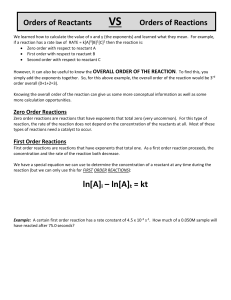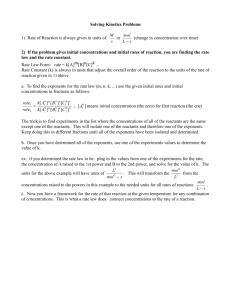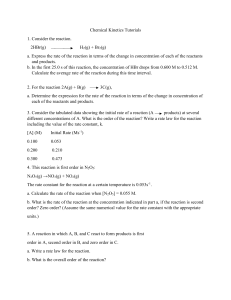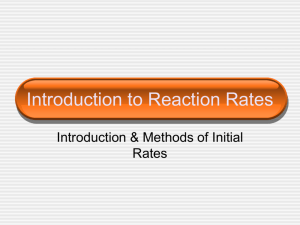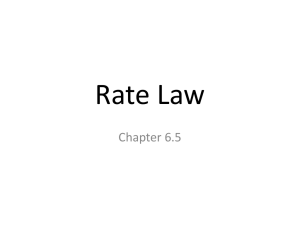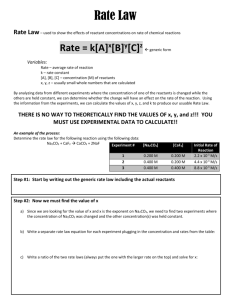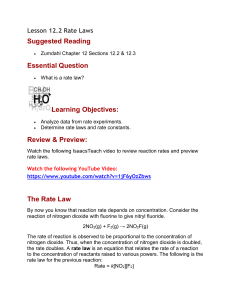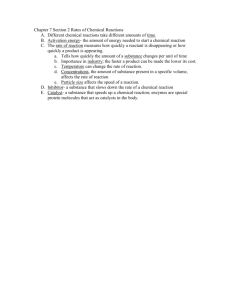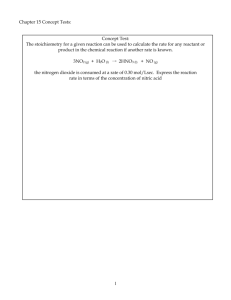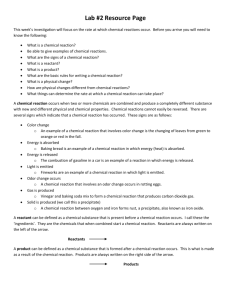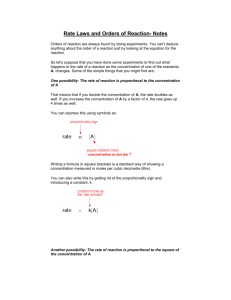6.2-Rate-Law
advertisement
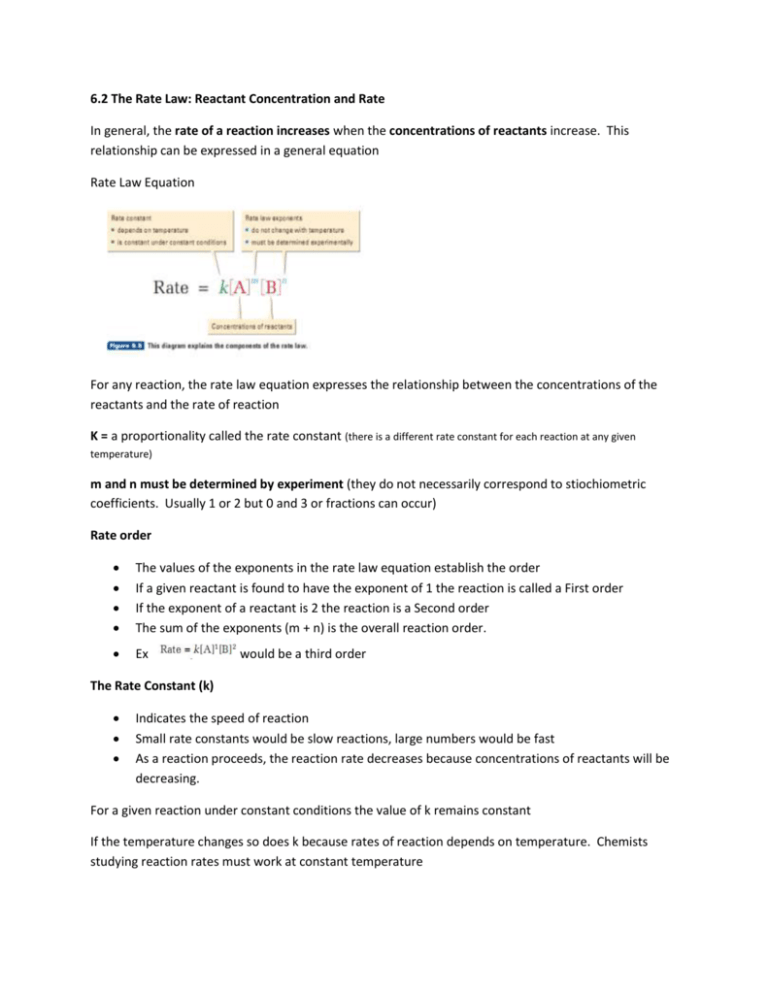
6.2 The Rate Law: Reactant Concentration and Rate In general, the rate of a reaction increases when the concentrations of reactants increase. This relationship can be expressed in a general equation Rate Law Equation For any reaction, the rate law equation expresses the relationship between the concentrations of the reactants and the rate of reaction K = a proportionality called the rate constant (there is a different rate constant for each reaction at any given temperature) m and n must be determined by experiment (they do not necessarily correspond to stiochiometric coefficients. Usually 1 or 2 but 0 and 3 or fractions can occur) Rate order The values of the exponents in the rate law equation establish the order If a given reactant is found to have the exponent of 1 the reaction is called a First order If the exponent of a reactant is 2 the reaction is a Second order The sum of the exponents (m + n) is the overall reaction order. Ex would be a third order The Rate Constant (k) Indicates the speed of reaction Small rate constants would be slow reactions, large numbers would be fast As a reaction proceeds, the reaction rate decreases because concentrations of reactants will be decreasing. For a given reaction under constant conditions the value of k remains constant If the temperature changes so does k because rates of reaction depends on temperature. Chemists studying reaction rates must work at constant temperature Defining First-Order Reactions Have an overall order of 1 2N2O5(g) → 4NO2(g) 5O2(g) Ex Experiments have shown this to be a first order reaction. And the rate Law equation would look like Rate k[N2O5]1 Reactions with more than one reactant can also be first order Ex (CH3)3CBr(aq) H2O(_) → (CH3)3OH(aq) Haq) Br(aq) Experiments have shown that (CH3)3CBr is 1st order and water is 0th order and the reaction rate does not depend on the concentration of water. Rate law equation Rate k[(CH3)3CBr]1[H2O]0 2nd order Reactions Have an overall order of 2 Ex 2HI(g) → H2(g) I2(g) Scientists have determined this is second order The rate would be Rate k[HI]2 NO(g) O3(g) → NO2(g) O2(g) Rate k[NO]1[O3]1 Summary Values of exponents in a rate law equation are determined experimentally Chemists determine values of m and n by carrying out a series ofexperiments by varying concentrations of reactants All other factors (temp remain the same) To determine m chemists perform different reactions with different initial concentrations of reactants Determining m Determining rate constant k a. Determine the order b. The rate law equation c. Determine the rate law exponents (m and n) d. Determine the Rate constant (k)
